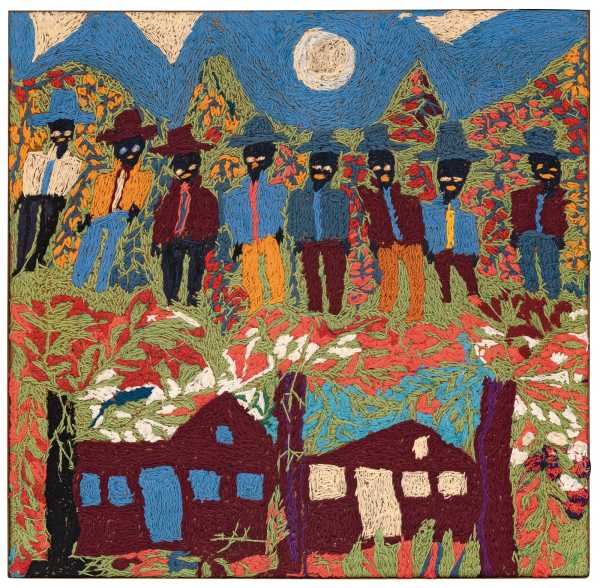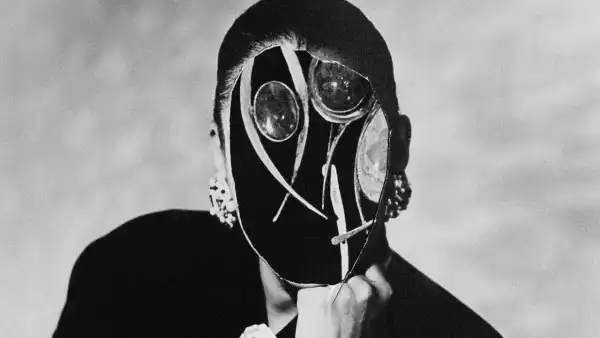
Save this storySave this storySave this storySave this storyYou’re reading the Goings On newsletter, a guide to what we’re watching, listening to, and doing this week. Sign up to receive it in your inbox.
New York City and roller-skating go way back. In 1863, a part-time inventor named James Leonard Plimpton, who ran a furniture store in the East Village, filed the first American patent for quad skates. Plimpton, who struggled with weak ankles, loved to skate but hated to wobble; his newfangled creation featured four squat, spread-out wheels, an innovation that allowed even novice skaters to conquer balance. Plimpton’s skates were a sensation, and, as a result, he converted his store into one of the city’s first must-visit roller rinks. Many fashionable rinks have dotted the city since—Empire Roller Skating Center in Brooklyn, the Roxy in Manhattan, Skate Key in the Bronx—but most are now closed.

Photograph by Landon Nordeman for The New Yorker
And yet Plimpton’s spirit lives on at Xanadu, a lively roller rink-slash-night club-slash-music venue that opened last summer in Bushwick. The spot has earned a cult following for its boisterous, disco-ball-illuminated, d.j.-spun skate nights, and also for its family-friendly emphasis on education: every Sunday and Wednesday, Xanadu hosts an all-levels beginner course called “Skaterobics.” Get rolling.—Rachel Syme

About Town
Broadway
Dying in 1911 was only the start for Elmer McCurdy, the real-life protagonist of “Dead Outlaw,” the invigorating rockabilly musical by David Yazbek, Erik Della Penna, and book writer Itamar Moses. The violent McCurdy (Andrew Durand) stumbles from botched train-holdup career to coroner’s table to posthumous gig as a corpse prop on an amusement-park ride, his long, weird tale told with palpable glee by Jeb Brown and a superb honky-tonk band. American entertainment unspools via McCurdy: shoot-’em-up Jesse James stories bewitch him as a boy, then B-horror flicks use his embalmed body as set dressing. The director David Cromer maintains a sense of carnival throughout, encouraging us to see life itself as a sideshow ride that rolls inevitably into the dark.—Helen Shaw (Longacre; through July 27.)
Classical
Ever since the Brooklyn Symphony Orchestra’s fortieth-anniversary season, in 2013, the B.S.O. has consistently paired with the Brooklyn Museum to fill its halls with music as vibrant and diverse as the surrounding art. This spring, for a “pop-up performance” held in the museum’s Beaux-Arts Court, the orchestra presents several vivid pieces, including a woodwind-quintet arrangement of the “Promenade” from Mussorgsky’s “Pictures at an Exhibition.” Also on the program are works from Gershwin, as well as selections from another iconic New York pair: Bernstein and “West Side Story.”—Jane Bua (Brooklyn Museum; May 18.)
For more: read Cynthia Zarin on the way “Bernstein was a Pied Piper who explained the world to us.”
Art

“Untitled (Characters and Landscapes),” (1965-1976).Art work by Madalena Santos Reinbolt / Courtesy American Folk Art Museum
Looking at the embroideries—or quadros de lã (wool paintings), as she called them—of the Brazilian artist Madalena Santos Reinbolt (1912–1976) can almost make you feel tipsy. Packed with people, animals, and plants rendered in long stitches, the compositions, which lack conventional perspective, are textural swirls of shapes and colors—as if the communal and the pastoral scenes they depict were in motion. Santos Reinbolt, who was Black, grew up on a farm in Bahia and later worked as a housekeeper and a cook, mostly for white clients (including the American poet Elizabeth Bishop, whose racist remarks about her employee’s creative practice are chronicled in the show). Santos Reinbolt’s earlier, more muted oil paintings are interesting enough, but it’s her abundant embroideries that convey the fullness of her imagination.—Jillian Steinhauer (American Folk Art Museum; through May 25.)
Dance
Bill T. Jones has always loved provocation, making dances about hot-button issues, and talking about himself. These interests coalesced in his solo show “Memory Piece: Mr. Ailey, Alvin . . . the un-Ailey?,” made last year for the Whitney Museum’s Alvin Ailey exhibition. In it, Jones, with his customary frankness and high articulation, addressed his career in relation to, and revolt against, the path Ailey cut for Black dancers. For his company’s home season, he reprises the solo and débuts “Curriculum III: People, Places & Things,” a questioningly nostalgic work for his sterling dancers in which he quotes Bob Dylan lyrics and considers freedom as a memory.—Brian Seibert (New York Live Arts; May 15-24.)
For more: read Joan Acocella on the glory of Jones’s “Fela!”
Broadway

Gracie Lawrence plays Connie Francis.Photograph by Matthew Murphy and Evan Zimmerman
In the lushly pleasurable Bobby Darin bio-musical “Just in Time,” by Warren Leight and Isaac Oliver, the director Alex Timbers ensconces his sweet-voiced star Jonathan Groff in a gleaming night club, an eternally perfect Copacabana for poor, doomed Darin, the crooner who died in 1973, at only thirty-seven. Other phantoms visit, including Darin’s early girlfriend Connie Francis (Gracie Lawrence), but all lovers fade in the face of larger losses. Groff dazzles us with joyful firework bursts: “Splish Splash,” “Mack the Knife,” and, most plaintively, the chanson “Beyond the Sea.” Groff has waited to play Darin, and, it appears, we’ve been waiting, too—in several beautiful moments, the two singers seem to call to each other across a very wide sea indeed.—H.S. (Circle in the Square; open run.)
Movies
The band Pavement, which had a powerful run in the nineteen-nineties, is the subject of “Pavements,” a delightfully bewildering cinematic jambalaya, directed by Alex Ross Perry, that both satisfies and mocks the conventions of rock movies. It’s partially a documentary that ransacks archival footage and adds new interviews to recount the band’s career, breakup, and recent reunion. It’s also a riotous trilogy of Pavement-centered art projects created for the movie—a jukebox musical called “Slanted! Enchanted!,” a museum show of memorabilia, and a tongue-in-cheek bio-pic, “Range Life.” As edited by Robert Greene, the multiple strands overlap and intertwine in a hectic variety of split-screen effects; the giddy mosaic nonetheless teems with the band’s music, which is, of course, the point.—Richard Brody (Film Forum; opens May 2.)
For more: read Holden Seidlitz on spending time with Perry as he workshopped the “Slanted! Enchanted!” musical.
Indie Pop
In the twenty-tens, having already sung backup for artists such as Harry Styles, Sheryl Crow, and Joni Mitchell, the indie-pop group Lucius emerged as its own rapturous creative force. A four-piece band featuring dual lead vocalists, the bass-synth player Jess Wolfe and the keyboardist Holly Laessig, its charms were self-evident across the breakthrough record “Good Grief,” from 2016—the music is prickly and luminous, with a funk-forward energy. The 2022 LP “Second Nature,” created after shelving a conceptual record in the shadow of COVID, leaned into euphoric, disco-laced grooves in search of sanctuary. The band’s new self-titled album reaches the pinnacle of a vibrant, harmonic enterprise.—Sheldon Pearce (Irving Plaza; May 15.)

Pick Three
Hannah Goldfield on New York City-born cookbooks.
1. The explosively creative Cantonese-American menu at Bonnie’s, in Williamsburg, put Calvin Eng on the map as a chef with a powerful point of view. His début cookbook, “Salt Sugar MSG,” co-written with his partner, Phoebe Melnick, makes it clear that he has a lot more to say. A lovely, lyrical essay about weekends at his grandparents’ apartment, in Manhattan’s Chinatown, introduces thrilling recipes for the home cook: an astonishingly satisfying Cantonese minestrone with ginger, fish sauce, and cilantro in addition to parmesan and cannellini beans; buttery oyster-sauce noodles; crispy five-spice chicken thighs strewn with Pringles, the way he remembers eating banquet-style squab as a kid.

Illustration by Lilly Hedley
2. Way uptown, in the Bronx, another New York City kid, Paola Velez, found her “happy place” in her local bodega, connecting with her Afro-Latina heritage through Dominican and Puerto Rican pastries. Her first book, “Bodega Bakes,” showcases her playful, personal, and often tantalizingly tropical spins on traditional recipes. She packs sugar cookies with diced guava and queso fresco, and turns the classic black-and-white cookie into passion-fruit half-moons. Why wouldn’t you make a tarte tatin with plantains, or put tamarind in your pecan pie?
3. The chef Jeremy Salamon grew up in Florida, but Brooklyn is where he opened his restaurant Agi’s Counter, named for his Hungarian-Jewish grandmother, who fled Budapest for New York in 1956. His cookbook “Second Generation” is a tribute to both Agi and his Nana Arlene, who was born and raised in the Bronx. It features deeply researched interpretations of historical Hungarian dishes, such as meggyleves (sour-cherry soup) and chicken paprikash, and spins on Jewish-American classics, like his confit-tuna melt on caraway Pullman.
P.S. Good stuff on the internet:
- The dark art of literary takedowns
- An obituary for millennial culture
- Something for the moms
Sourse: newyorker.com







